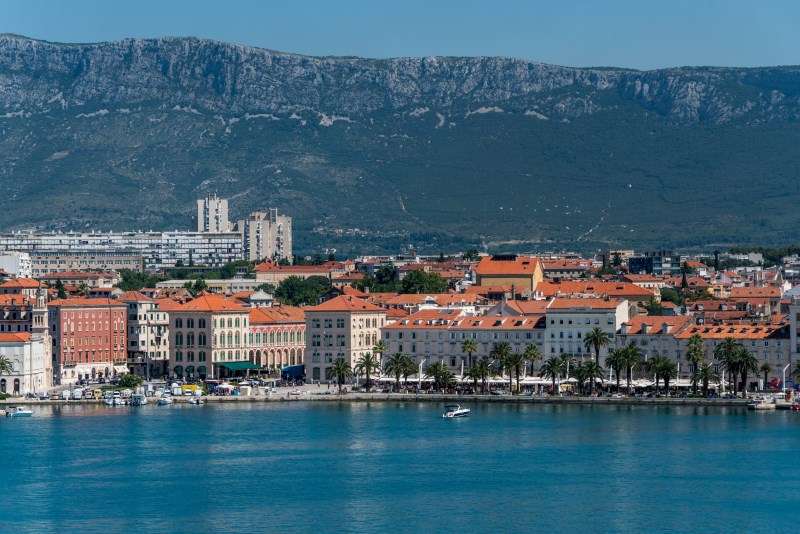Residents of the “city under Marjan ‘s pride will tell you that their city is” the most beautiful in the world and “how well do not argue with them because spirited Split will convince you of this no doubt! This for ever young city with around 300 000 inhabitants of the warm Mediterranean temper, has lived its urban rhythm for as long as 1700 years, with its heart in the Diocletian’s Palace and its soul that welcomes with open arms. The city is under UNESCO protection and listed in the register of World Cultural Heritage.

Placement and natural conditions
The city of Split is situated in the warmest part of the northern Mediterranean coast, in the middle of the Adriatic coast and near rivers Jadro and Žrnovnica that it is already 1700 years water supplies. Its mild climate with 2700 hours of sunshine a year, makes it an oasis in the middle of winter in which the wind, one can enjoy the sun. Industrial, university and economic center of the region, its “green soul” on the hill Marjan situated in the western part of the peninsula, where a forest park near the city offers pleasant walks away from city noise under the pines by the sea.
Historical name of Split
The city of Split has historically been changing its name. Thus we find him as Aspalathos / Spalatos (Greek), Spalatum (Latin), Spalato (in Italian), Spljet, Split. Origin of name is made of broom plants (¼ uke) that grows in abundance. In fact the Greek word for broom is aspalathos. It is a theory, a theory on another; name is derived from the Latin word, as uvećanica the palace – that is, “palačetina” or “Spalato” = Palačić, a small palace (in Italian).
Emperor Diocletian
The first inhabitant of Split was the Emperor Diocletian, who is exactly in this friendly bay around 293 AD AD built a lavish imperial villa of approximately 30 thousand square meters in which he withdrew after going to the throne of the Roman emperors. The following turbulent centuries made the villa of the city in which they first entered the inhabitants of nearby Salona, fleeing before Avars and Slavs. Throughout history, the city that grew outside the walls of the palace were many authorities from Croatian kings in 10th century AD, Hungarian and Venetian administration, to French rulers and Austro-Hungarian monarchy. Such past left its traces combined in the everyday life of a city that has always gone before – on remaining the center of this part of the coast to this day.
| General information about Split | |||
|---|---|---|---|
| No. of citizens | Size km2 | Postal no. | Official website |
| 188 694 | 79,33 | 21000 | Grad Split |


| Average monthly temperature | |
|---|---|
| 01. | 7.0°C |
| 02. | 7.8°C |
| 03. | 10.5°C |
| 04. | 14.8°C |
| 05. | 18.5°C |
| 06. | 22.5°C |
| 07. | 25.6°C |
| 08. | 24.8°C |
| 09. | 20.9°C |
| 10. | 16.8°C |
| 11. | 11.8°C |
| 12. | 8.1°C |
| Climate information | |
|---|---|
| Average winter temperature | 9°C |
| Average summer temperature | 25°C |
| Number of sun hours per year | 2700 |


